#buch der heiligen dreifaltigkeit
Explore tagged Tumblr posts
Text
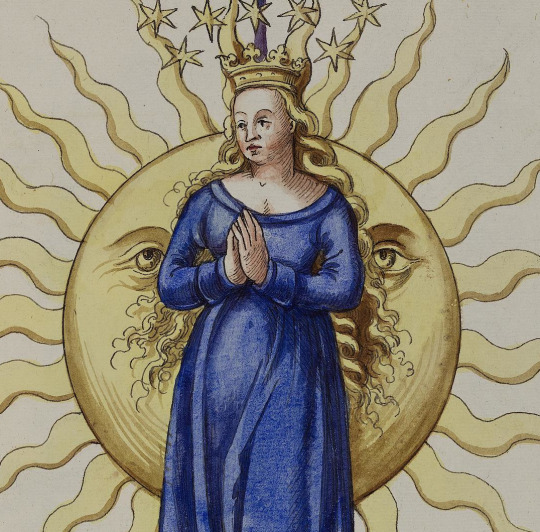
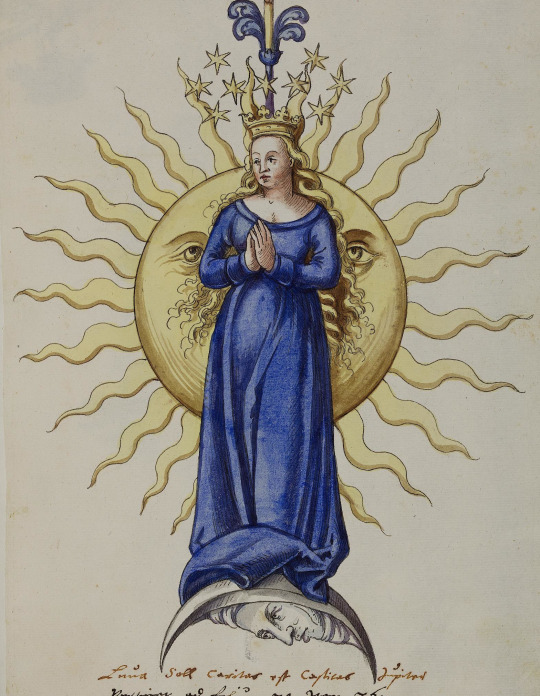
mary as the "woman clothed with the sun"
in a manuscript containing alchemical illustrations, southern germany, c. 1570-1580
source: Vatican, Bibl. Apostolica Vaticana, Pal. lat. 1885, fol. 14r
#16th century#alchemy#alchemical illustration#manuscript#book of the holy trinity#illustrated manuscript#the woman clothed with the sun#woman of the apocalypse#sun#moon#buch der heiligen dreifaltigkeit
1K notes
·
View notes
Text
Rand al'Thor in S2 of Wheel of Time
I wrote about Rand as the Dragon (Reborn) in Season 1 here:
And for some comments about Ep 2.1 see here:
We get a lot of time with Rand in Episodes 2-5, but not a lot of new alchemical imagery until THIS showed up.

This is in the dream sequence with Lanfear in 2.5.
The alchemical process is often depicted as a wheel; in fact, one of the names for the Great Work/Magnum Opus is opus circulatorium. (In her dictionary of alchemical imagery, Lyndy Abraham transates the Latin term as "the circular work of the elements.")
The raw material of the Philosopher's Stone, the prima materia, and in a story, the protagonist is tried and tested and tortured in many different ways. One is being tied to a wheel, as here in the Buch der heiligen Dreifaltigkeit (Book of the Holy Trinity, c. 1410), top right.
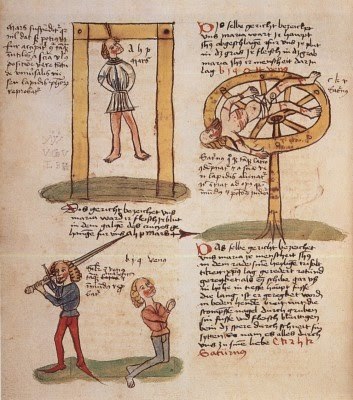
And here (same source):

Since this was only a dream sequence, Rand wasn't actually physically tortured.
In a previous episode, we see Mat stabbing Rand to death--again, not in reality, but in one of Min's visions. You begin to see how useful it is for an author deploying alchemy to include dreams and visions in the story. If you stab or behead or crucify your hero every few chapters, he or she is not going to make it to the end of the book.
For stabbing, I like this image from Speculum Veritatis (1725), which shows both the king (one of the symbols for the Philosopher's Stone) and the Serpent (a symbol for Mercurius, the prima materia) being stabbed. In other words, first the Philosopher's Stone-to-be is stabbed in its initial, primitive, snake form, then it is stabbed in its final, elevated, kingly form. Like many alchemical illustrations, this image shows a sequence of events. In this case, you read the story from right to left.

Finally, it seems that Rand's having red hair IS a marker for him as philosopher's stone-to-be, or in the term TWOT uses, the Dragon Reborn. Logain notices right away that Rand has red hair, which he's tried to shave to disguise himself. You could argue that Rand's action there also fulfills the Hero's Journey stage of "refusing the call."
I must say I am enjoying Season 2 more than Season 1. Maybe because I've figured out who the main characters are finally.
#alchemy#wheel of time#rand al'thor#buch der heiligen dreifaltigkeit#dragon#wheel#philosopher's stone#robert jordan
14 notes
·
View notes
Text










Buch der heiligen Dreifaltigkeit (Book of the Holy Trinity) is one of the earliest alchemical manuscripts with emblematic illustrations, as well as being the earliest alchemical work written in German. The work seems to have been created around 1410-1419 and a number of manuscripts appeared during the first half of the 15th century. A later revision of the text was created around 1440. Its wonderful imagery later influenced such series as the Rosarium philosophorum (1550).
3 notes
·
View notes
Text


Ulmanus: Buch der Heiligen Dreifaltigkeit
1 note
·
View note
Text
Rezension -Iss das jetzt, wenn du mich liebst-

Klappentext
Die liebe Familie - und andere Katastrophen
Die junge Berlinerin Kinga will heiraten. Und zwar ihren Freund Mahmut, mit dem sie bereits seit einigen Jahren Wohnung und Weltansicht teilt. Alles könnte perfekt sein, aber Kingas Eltern kommen aus Polen, und in der Heiligen Dreifaltigkeit aus Kirche, Wodka und Gulasch ist kein Platz für einen muslimischen Schwiegersohn. Kurzerhand wird der unerwünschte Anhang zum Kennenlernen zu einer Familienhochzeit in der alten Heimat eingeladen - und da sorgt nicht nur Omas Flaki für Magenschmerzen.
Cover
Das Cover hat mich angesprochen, auf witzige Weise.
Schreibstil
Der Schreibstil ist angenehm und leicht. Man fließt ganz sanft durchs Buch und kann es nicht mehr weg legen.
Inhalt/Rezension
Ich wollte den Roman nur anlesen und mich hat die Geschichte gleich hineingezogen. Kinga und Mahmut sind ein Paar und wollen den Nächsten Schritt wagen. Kingas Familie ist davon aber nicht begeistert.
Kinga und Mahmut sind ein tolles Paar und ich mochte die beiden sofort sehr gerne. Mahmut muss sich von Kingas Familie einiges gefallen lassen. Er erträgt es aber und geht sehr souverän mit dem ganzen um.
Auf witzige Weise werden unterschiedliche Themen angesprochen, Herkunft, Familie, Rassismus usw. Mich hat das zum Nachdenken angeregt und der Roman hat mir sehr gefallen.
Fazit
Ein lustiger Roman, der mich noch länger in meinen Gedanken begleiten wird.
Zum Buch
Verlag: HarperCollins
Autorin: Bianca Nawrath
Preis: 14 Euro
1 note
·
View note
Photo
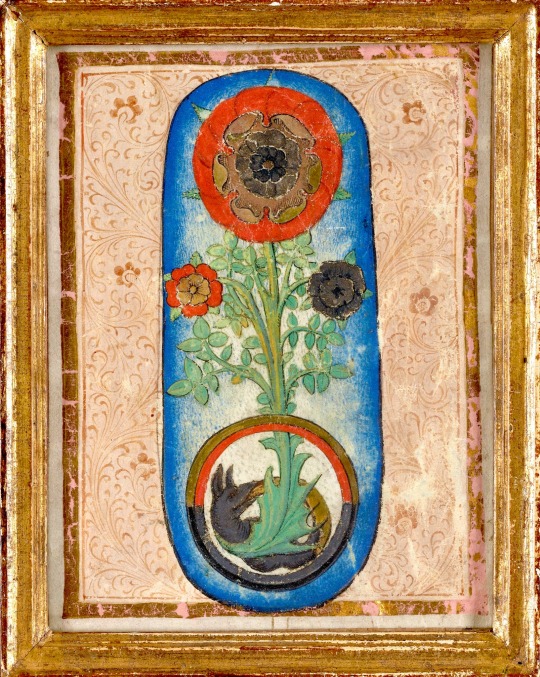
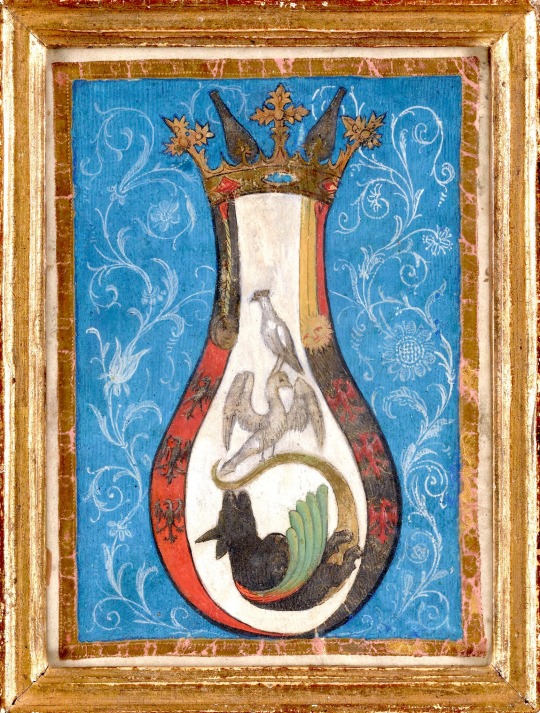
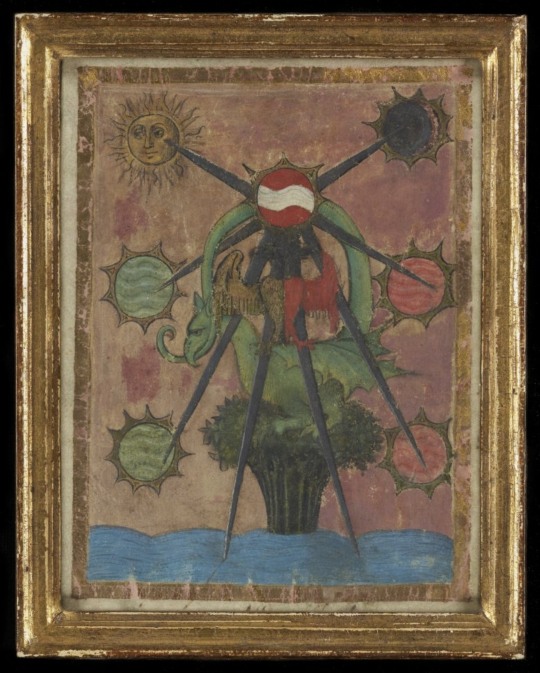
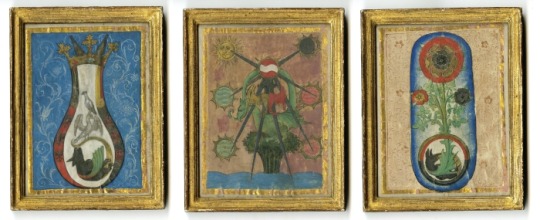
~ “Allegory of Purification Alchemical miniature believed to be from Das Buch der heiligen Dreifaltigkeit (The Book of the Holy Trinity), based on the iconography depicted and their relation to the text. c. 1450 – 1475; The Seven Forms of Transmutation, from Das Buch der heiligen Dreifaltigkeit (The Book of the Holy Trinity); The Flower of Wisdomfrom Das Buch der heiligen Dreifaltigkeit (The Book of the Holy Trinity).” ~
https://www.textmanuscripts.com/enlu-assets/catalogues/primer/primer-2-alchemy/primer-2-alchemy.pdf?fbclid=IwAR2g-tLI6OO4-ux5iyLFo-wR_ffOzg35IsIaEd1J9Z_TnSYRVwgUtnjMSMI.
https://cen.acs.org/articles/92/i2/Scholars-Land-Alchemy-Cache.html?fbclid=IwAR26GBvaCKcuCVaC902nHs-aVVXvZNnqhvgq5Tgw3c4p8QsuTm6BdJaMVUw.
2 notes
·
View notes
Photo




The 15th century saw the production of some of the most eye-catching alchemical manuscripts, with unusual image sequences. One of the most impressive is Das Buch der heiligen Dreifaltigkeit (The Book of the Holy Trinity), attributed to the Franciscan Frater Ulmannus, dating from the early years of the century. It is a curious mixture of alchemy, religion and politics.
I’ve already introduced to you the ‘evil hermaphrodite’ (Lucifer and his mother), in an earlier post, but here you have Adam, Eve, and an anthropomorphic Serpent as representatives, respectively, of the Body, Soul, and Spirit of Matter, especially the Philosophers’ Stone, with the Serpent, in one version, clearly identified as Mercury.
Here I’m providing an artistic version from Munich, another from Manchester, and then a particularly ‘Planet of the Apes’ kind of Adam from Kassel.
90 notes
·
View notes
Text

Allegory of Purification
Part of Das Buch der heiligen Dreifaltigkeit (The Book of the Holy Trinity])
c. 1450 – 1475
7 notes
·
View notes
Photo

Three Alchemical Miniatures, Circa 1450- 1475
These three alchemical miniatures are believed to be from Das Buch der heiligen Dreifaltigkeit [The Book of the Holy Trinity], based on the iconography depicted and their relation to the text. Das Buch der heiligen Dreifaltigkeit is the first alchemical text in German produced in either Southern Germany or Austria.
Citation: “Three Alchemical Miniatures.” Manuscript on parchment. In Das Buch Der Heiligen Dreifaltigkeit [The Book of the Holy Trinity], circa 1450–1475. https://digital.sciencehistory.org/works/8c97kr51w.
201 notes
·
View notes
Text



alchemistic "rebis" figure, half-male and half-female
from Ulmannus' "Buch der heiligen Dreifaltigkeit" ("book of the holy trinity"), alchemistic illuminated manuscript, Bavaria, late 15th c.
source: München, Staatsbibliothek, Cgm 598, fol. 105 verso.
#alchemy#rebis#rebis figure#medieval art#illumination#illuminated manuscript#medieval illumination#medieval manuscript#middle ages#dragon#Buch der heiligen Dreifaltigkeit#Ulmannus
96 notes
·
View notes
Text
Alchemy Manuscripts - Book of the Holy Trinity (1410s)
Alchemy originally drew from Egyptian religion, Greek philosophy, and Zoroastrianism. Those ideas were then developed by Jewish, Islamic, and Christian writers. The images in Aurora consurgens were all secular:
https://argentvive.tumblr.com/post/685339310743027712/alchemy-illustrations-i-manuscripts
In the Book of the Holy Trinity, composed a few years later, the imagery was explicitly Christian. The process of creating the Philosopher’s Stone--the repeated dissolutions and coagulations, the purging and “killing” of the Stone--was directly compared to the sufferings of Christ and Christian martyrs. I would not be surprised if George R R Martin got some of his ideas for the extreme violence in ASOIAF from this manuscript (or the later works it inspired).
Beheading--
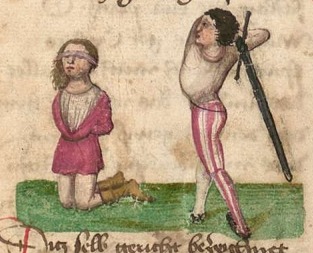
Crucifixion--
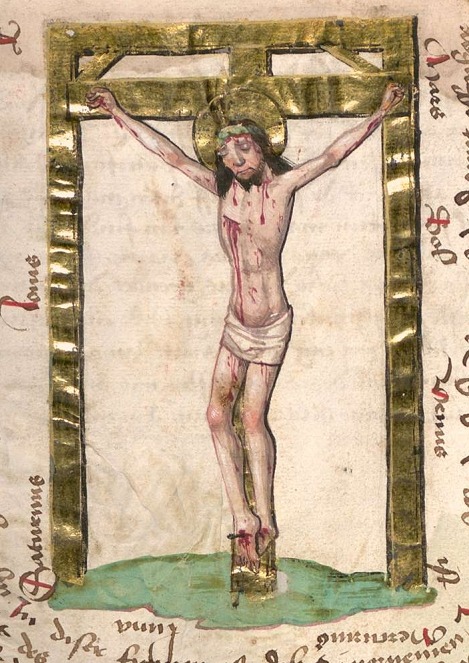
Hanging--
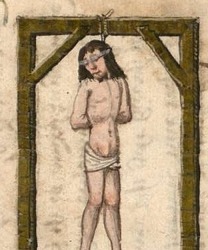
Hanging, breaking on the wheel, beheading--
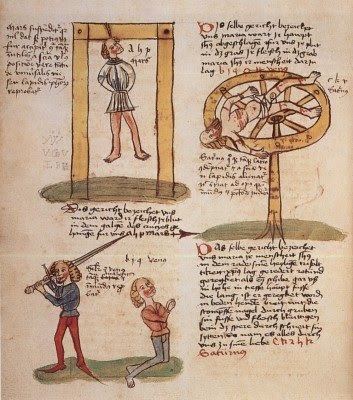
Stabbing. In this case it’s Adam being stabbed (by a serpent woman) as Eve looks on.
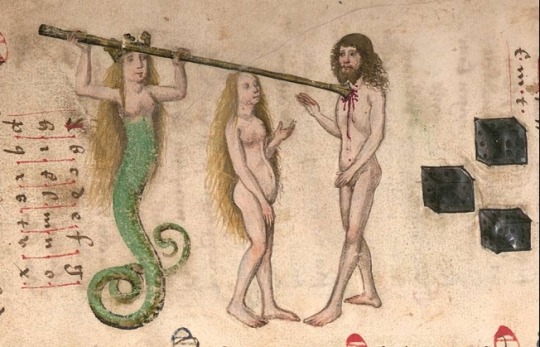
The Book of the Holy Trinity also includes some often copied images of the rebis/hermaphrodite/androgyne--the result of the Chemical Wedding between Sulphur and Mercury/Argentvive.
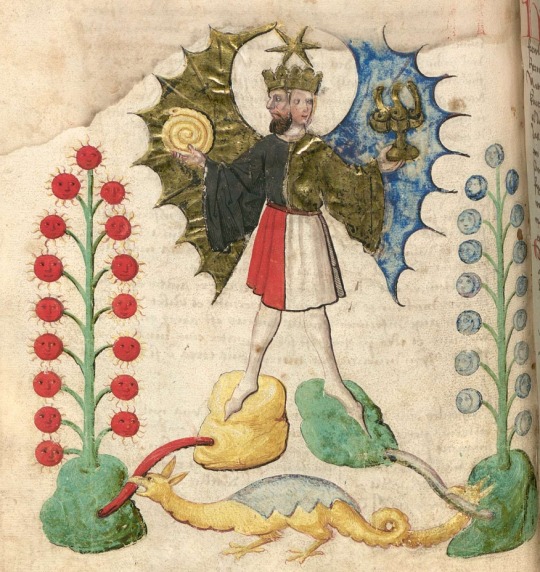
This next variant of the rebis image, with the sword, is one I’ve returned to again and again in explaining the relationship between Jaime and Brienne in ASOIAF.
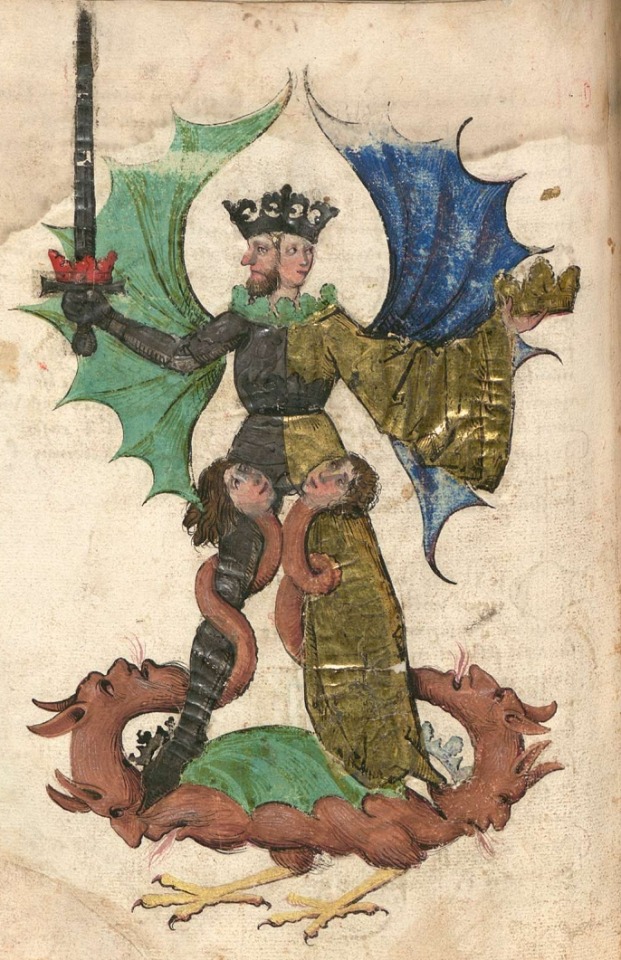
For a complete list of images from this work, see Adam McLean’s website:
https://www.alchemywebsite.com/imagery_buch_der_heiligen_dreifaltigkeit.html
The treatise and its imagery were written at the time of the Hussite rebellion in the Czech lands. An excerpt was presented to Emperor Sigismund at the Council of Constance (1416-17). It was intended as a piece of pro-imperial--and thus anti-Hussite-propaganda (van Lennep, p. 70) It also functioned as a way to legitimize the interest in alchemy by many German rulers at the time and in the following centuries.
#alchemy#alchemy 101#buch der heiligen dreifaltigkeit#book of the holy trinity#rebis#chemical wedding#alchemy manuscript#emperor sigismund#george r r martin#a song of ice and fire
14 notes
·
View notes
Photo

Sylowar History of Writing Systems
First time posting anything conlang related! I held off on making the Syl script because I had to force myself to get somewhere with the grammar first lolol. Finally was able to get this out of my system!!

The Syl originally wrote in two ways:
The first was with a plant gel/water mixture, applied to a schist-like stone called gṙomec, which could be chipped away in sheets. The mixture, gulikst ralḃi, made the surface of the stone very photosensitive. Objects were then arranged on top. The ancient Syl would use small bones, particularly those of fish, or mammal’s phalangeal/metacarpal bones. (Yes, that does include human-- it was common for a family’s ‘stamp’ collection to include the fingers of their ancestors :9)
There was a limit to what gṙomec’s utility was, though. It could document, but it couldn’t be shaped. Using the bones they already had, the Syl began to stamp clay. It was an incredibly useful way to mark property, gifts and locations, and took far less time than gṙomec ty gomīny (gṙomec pushing).
Fun fact: A family’s collection of stamps tended to be very identifiable. Through of the sheer amount of stamping done, tracing the movement of a household can be done. The stamp-box’s inheritance was usually one of primogeniture, to the eldest daughter or son.

Evolution of Syl script:
Example: the evolution of the symbol of <š> /ʂ/. #1 and #2 are from the Kobumer era, which ranges from 3,950 years old to only 750 years ago. Domwner writings do exist, but what’s left is mostly lost.
After the Asmaržer period, when the release of a somniferous gas caused centuries of preserved sleep, the Syl became very attached to order and structure. #3 and on developed in Nežmer (135 year post-frozen period) and remain recognizable in the chemical day, Opšor. The current year is 218.
Syl is written right-to-left, but it’s gone either way historically. Generally speaking, as long as the strokes are recognizable, a Syl person can understand it. They do recognize the earlier symbols with only one or three strokes, but find it creepy. Odd numbers are dishonest and unsettling, particularly 3.
Brief further notes, full script WIP below:
Notes
The physical script has some work left, as of 12/22/2020. Some of the ancient symbols are a nightmare to simplify. Most of the inspiration came from bones, particularly ribs-- I’ve been fascinated with the way they look ever since I came across a lot of (fish) skeletons on the beach as a child. I’m a squeamish vegetarian though, believe it or not :P
Here’s where I’m at, with the fifth iteration:

Some influence seeped in from alchemy manuscripts, but I restrained myself preeeeetty well (<c> has a little sol, plenty of smaller elements in there too). Unrelated to the Kairnavorea project, I’d love to make an entire conlang out of ridiculous protoscientific metaphors & iconography someday.
Relevant words:
gṙomec - N. A mildly photosensitive, layered stone. Frequently found on the coast and salt marshes.
gulikst ralḃi - gel writing-GEN. gel’s writings, writings of the gel
koṙsal - N. blend of koṙl/finger and cambal/stamp. Means ‘pen, stylus’ or a general writing tool.
žes - N. word, one
ulmanuc - N. treatise, compiled research (from Frater Ulmannus and his Buch der heiligen Dreifaltigkeit, my favorite manuscript)
manocy - V. to write
ẋējā - N. legend, myth, story
birucūta - N. symbol, motif
sklamdot - N. clay, sometimes crockery
bōumoā - ADJ. creepy, unsettling
bosd - N. bone (of any sort)
Hopefully I haven’t rambled on too long! I rarely post things in so much detail, but I’d like to leave my footprint somewhere. My next post will be about Syl music scales (as you might be able to guess, they’re only tetratonic/hexatonic).
#conlang#conscript#constructed language#constructed script#worldbuilding#the_syl#syl_archaeology#syl_neography#syl_earlyhistory
2 notes
·
View notes
Text

Ulmannus, Buch der heiligen Dreifaltigkeit, Franconia ca. 1470
München, Bayerische Staatsbibliothek, Cgm 598, fol. 78v
10 notes
·
View notes
Text
the image was probably popularized in texts like Aurora consurgens (15th c.) with something like this:

which is a depiction of two St. Bernards suckling at the Virgin's breast (she is also Sophia/Wisdom/alchemical gnosis here). This text was almost purely theoretical, so the meaning of the image is more spiritual than practical.
but Christian theological imagery entered the alchemical visual lexicon with Der Buch der heiligen Dreifaltigkeit (early 15th c.)

...in which Christ and the Virgin become the two halves of the alchemical wedding. there's no image of lactation in this manuscript, but because Christ/Mary represent the purified form of matter and the completed lapis philosophorum (philosopher's stone) after chemical transformation, my guess is that the lactation is either the attainment of spiritual gnosis or maybe the blood/milk combo symbolizes the philosopher's stone itself (which wasn't always a stone, but could be a liquid substance too)
that's just my two cents as your friendly neighborhood early modern magic expert lol
One of the most important alchemical symbols of Renaissance Christian alchemy was the virgin Mary squeezing her tiddies into a bowl
#see the forthcoming paper lol#i'm presenting a paper on alchemical hermaphrodites at a conference in a few months
26K notes
·
View notes
Text

Buch der heiligen Dreifaltigkeit (c. 1467). Detail. [x]
0 notes
Photo

serpent queen
Ulmannus, Buch der heiligen Dreifaltigkeit, Franconia ca. 1470
München, Bayerische Staatsbibliothek, Cgm 598, fol. 78v
#serpent#hybrid#lilith#queen#illumination#illustration#book#medieval#medieval art#manuscript#art#15th century#alchemy
3K notes
·
View notes